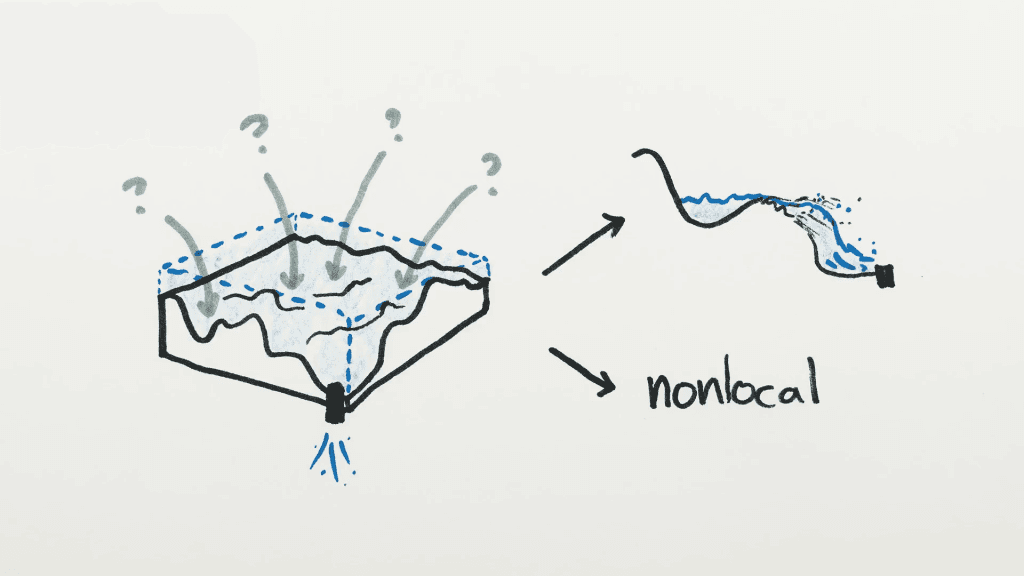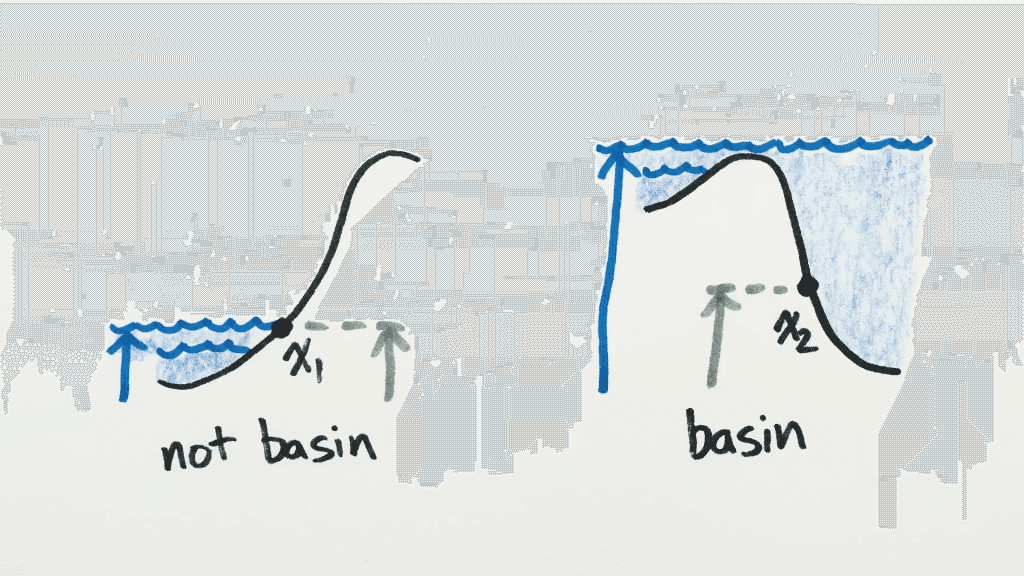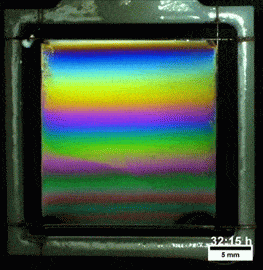At first glance, draining an ocean seems simple like a simple problem: just put a drain at the lowest point. But, as shown in this Minute Physics video, the problem is harder than it sounds because drainage depends not just on a point’s elevation but also on the path that leads to the drain. Fortunately, Henry has some clever methods for figuring out which areas would drain and how. (Video and image credit: Minute Physics)
Tag: drainage

The Art of French Drains
Civil engineers face a constant challenge trying to protect their structures from water — both above and below the ground. Subsurface water can build up enough pressure to lift and damage structures, so engineers use subsurface infrastructure — like French drains — to control the water underground. Despite the name (and my title pun), French drains have nothing to do with France. Instead, they are named for Henry French, an author who described their construction and use in the 19th century. These drains use a combination of rocks, mechanical filters, and perforated pipeline to guide subsurface water and drain it away from foundations. (Video and image credit: Practical Engineering)

Draining By Vortex
Unstop your bathtub and the draining water will form a tiny tornado-shaped vortex over the outlet. Four centuries ago Torricelli developed a mathematical equation to describe how long it would take to empty the container, based on the height of the fluid in the tank. Now researchers have made a more generalized version of Torricelli’s law, based on experiments with a rotating tank. They found that measuring the water level above the outlet (i.e., taking into account the surface level dip caused by the vortex) gave better agreement. The stronger the vortex, the lower the surface dips and the slower the container drains. (Image and research credit: A. Caquas et al.)

Reintroducing Beavers
Beavers are impressive ecological engineers and a keystone species for wetland environments. But in the UK, it’s been nearly 400 years since beavers were regularly found in the wild. In the meantime, Victorian engineering sensibilities drastically altered the landscape to quickly drain rainwater from upstream locations, which unfortunately increases flooding dangers downstream.
But all of that is changing with the reintroduction of wild beavers in a Cornwall experiment. Within their 5 acres, the beavers are transforming the landscape by deepening ponds and slowing water drainage. Their dams create ideal habitat spaces not only for the beavers but for many other species of mammals, birds, and insects. Check out the full interview to learn more and see this previous post for a similar effort in the Western U.S. (Video and image credit: BBC Earth)

Soap Film Evolution
The beautiful colors of a soap film reflect its variations in thickness. As a film drains and evaporates, it turns to shades of gray and black as it gets thinner. More than fifty years ago, one scientist proposed a free-energy-based explanation for how such ultrathin films might evolve. But it’s taken another half a century for experimental techniques to reach a point where the thickness of these ultrathin films could be measured well enough to test that theory. The new mechanism, known as spinodal stratification, has been observed in both vertical films (top) and foam (bottom) but has so far not been observed in any horizontal configuration, suggesting that buoyant effects are likely important, too. (Image and research credit: S. Yilixiati et al.; submitted by James S.)

Soapy Rainbows
The swirling psychedelic colors of a soap bubble come from the interference of light rays bouncing off the inner and outer surfaces of the film. As a result, the colors we see are directly related to the thickness of the soap film. Over time, as a film drains, black spots will appear in it. This happens where the bubble’s wall becomes thinner than the wavelength of visible light. Black spots will grow and merge as the film continues to thin. Then, when it’s too thin to hold together any longer, the bubble will pop and disappear. (Image credit: L. Shen et al., source)

Melted Polymers

What you see here, despite appearances, is not a soap film. On the contrary, this is a thin vertical film made up of melted polymers. Like a soap film, it is extremely thin, varying from a few nanometers at its thinnest to several hundred nanometers at the thickest point. But unlike a freestanding soap film, this polymer film can last for more than a day before the film breaks. Researchers attribute the long life of the films to structural forces inside the fluid.
They observed that the films remain highly stratified, varying smoothly in thickness from their thinnest point at the top to the thickest point at the bottom. They hypothesize that the geometry of the film preferentially traps the polymer’s molecules in preferred orientations, which reinforces the stratification and helps stabilize the film. For more, check out the research paper. (Image credit: T. Gaillard et. al., source; via KeSimpulan)















